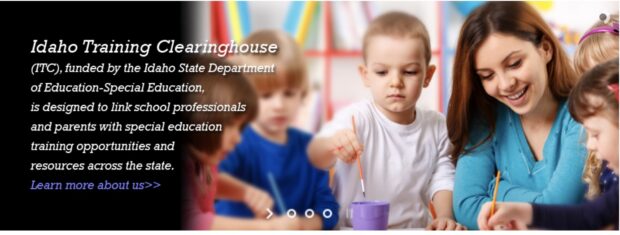
Angela Lindig last week sent a short survey to parents of students with disabilities and special healthcare needs.
Lindig, the director of a family aid organization called Idaho Parents Unlimited, wanted to know how schools were communicating with the families of students on individual education plans (IEP’s) as many districts pivot to remote or online learning amid coronavirus concerns.
The survey asked parents if they’d heard from their child’s IEP team. If so, were they satisfied with the results?
By Monday morning, Lindig had nearly 150 mixed replies.
Some parents had heard from their schools. Others hadn’t. And on the question of satisfaction, Lindig said, many parents answered: “I’m not sure.”
“There’s just a lot of uncertainty,” Lindig said. “A lot of anxiety and a lot of uncertainty right now.”
As Idaho schools wade into the unfamiliar territory of distance learning, districts are on the hook to make sure students with disabilities receive a “free and appropriate public education”, a requirement in the federal Individuals with Disabilities Education Act.
For special education directors in Idaho — and across the country — that’s a work in progress.
“Nobody knows the answers at this moment,” said Kindel Mason, director of special services for the Jerome School District and president-elect of the national Council of Administrators of Special Education said on Tuesday. “It is an ever-changing landscape.”
When coronavirus was first confirmed in Idaho in mid-March, school districts reacted with disjointed — and sometimes fickle — plans for when to close, and whether to continue educating kids. Idaho charter schools and the Nampa School District announced they were moving to online learning. Districts like Blaine County and West Ada initially held back from that plan, out of legal concerns they couldn’t provide a free and appropriate education for all.
An Idaho State Board of Education ruling on Monday clarified, and streamlined, the path forward: Idaho schools will remain closed through at least April 20. In the meantime, the State Board expects schools to continue educating students, including students with disabilities and others who need education accommodations.
“School districts and charter schools shall develop a plan on delivering special education services,” the State Board wrote in guidance released on Monday night.
State and Federal governments are billing this as an opportunity to get creative.
“There is nothing that prohibits any of us from exploring and becoming creative in providing alternative modes of delivering instruction,” Charlie Silva, the state Special Education Director said during a Tuesday webinar, explaining guidance that U.S. Secretary of Education Betsy DeVos released over the weekend.
Idaho SESTA, a group that provides Special Education Support and Technical Assistance, built a flowchart to help special education directors consider how they’re going to meet the needs of each student with an IEP.
Julie Mead, director of SESTA at Boise State University, told special education directors on Tuesday that even if districts are offering optional or ungraded work, those lessons should be accessible for special education students.
“It’s important to us…that our students receive the same level of access to education materials as other students,” Mead said.
Frank Maier, director of Special Education in Coeur d’Alene, said his district is considering a mix of paper packets and online learning to deliver services.
“We understand that services may not look the same as they would in the classroom,” Maier wrote in an email to EdNews. “What is important is that everything we provide as a district is accessible, reasonable and shows a good faith effort when trying to maintain skills.”
Mason, in Jerome, said designing accessible services could mean teachers who assign a reading packet also send a video or audio clip of them reading the material for students who need reading support. In cases where a student has a caregiver at home, teachers might also be able to partner with that caregiver to help facilitate schoolwork.
“It’s really considering the needs of each student, and the needs of each family, and then building individual plans for the student to move forward,” he said.
The Jerome school district, Mason said, has just under 500 students on IEP plans. His team will be calling them all — both to work out an IEP plan and to try and “provide a sense of normalcy.”
“We have staff that are scared, students that are scared, parents that are scared,” he said. “Somehow we need to be connected to our students and families, trying to be that rock that we are on a normal day-to-day basis.”
Based on survey results, Lindig said parents are understanding that schools and districts are in uncharted territory. On Facebook, Idaho Parents Unlimited praised the State Department of Education’s recent webinars focused on special education needs.
“The number one thing we’re trying to tell parents, and I think everybody is in the same boat, is: Let’s be patient,” Lindig said. “Nobody’s had experience with this before, so we just have to be patient and work together.”
For more resources on special education, visit the Idaho Training Clearinghouse, Idaho SESTA, the Counsil of Administrators of Special Education and Idaho Parents Unlimited.
